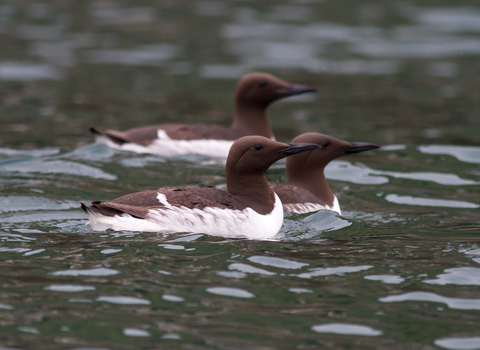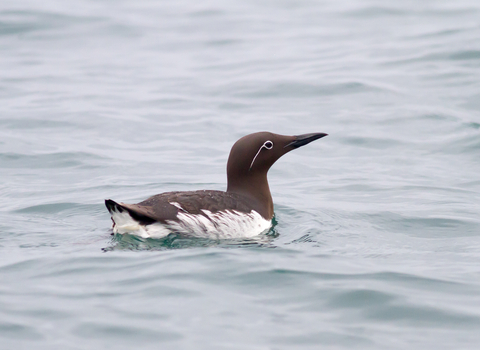
Common guillemots ©Mike Snelle

(Bridled) common guillemot ©Mike Snelle

Guillemot (winter-plumage) ©Tom Hibbert
Guillemot
Guillemots really know how to live life on the edge – quite literally! They nest tightly packed on steep ledges and cliffs around the coast. This may sound like a strange nesting spot, but it keeps them safe from predators. Thankfully these birds aren’t afraid of a little cliff diving – at three weeks old, guillemot chicks jump off the cliff into the sea!
Scientific name
Uria aalgeWhen to see
March to JulySpecies information
Statistics
Length: 38-45cmWingspan: 64-73cm
Weight: 850-1130g
Average lifespan: 23 years
Classified in the UK as Amber under the Birds of Conservation Concern 5: the Red List for Birds (2021).
